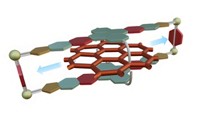Advertisement
Grab your lab coat. Let's get started
Welcome!
Welcome!
Create an account below to get 6 C&EN articles per month, receive newsletters and more - all free.
It seems this is your first time logging in online. Please enter the following information to continue.
As an ACS member you automatically get access to this site. All we need is few more details to create your reading experience.
Not you? Sign in with a different account.
Not you? Sign in with a different account.
ERROR 1
ERROR 1
ERROR 2
ERROR 2
ERROR 2
ERROR 2
ERROR 2
Password and Confirm password must match.
If you have an ACS member number, please enter it here so we can link this account to your membership. (optional)
ERROR 2
ACS values your privacy. By submitting your information, you are gaining access to C&EN and subscribing to our weekly newsletter. We use the information you provide to make your reading experience better, and we will never sell your data to third party members.
Materials
Molecular Machine Wrap
A helical molecule that can wrap and unwrap itself around a dumbbell-shaped molecule functions as a molecular shuttle
by Bethany Halford
March 7, 2011
| A version of this story appeared in
Volume 89, Issue 10
Taking a new twist on molecular machines, an international team of chemists has created a molecular shuttle by wrapping a helical molecule around a dumbbell-shaped molecule (Science, DOI: 10.1126/science.1200143). The resulting assembly is akin to a rotaxane—a pair of mechanically interlocked molecules in which a dumbbell-shaped molecule is threaded through a macrocycle. But in the case of the new shuttle, the helix can unwind itself from the dumbbell. Project leaders Hua Jiang of the Chinese Academy of Sciences and Ivan Huc of France’s University of Bordeaux were inspired to build the device by the dynamic behavior of biological molecular machines, which slowly assemble and disassemble but rapidly do work when all their components are in place. In Jiang and Huc’s molecular shuttle, an oligomeric aromatic amide—a molecular tape—forms a helix around a hydrocarbon rod equipped with bulky substituents at each end and carbonyl anchor points for hydrogen bonding. Although winding and unwinding of the helix is slow, once in place the helix quickly shuttles up and down the rod between different hydrogen-bonding sites. “This modular design and dynamic assembly open up promising capabilities in molecular machinery,” the researchers note.




Join the conversation
Contact the reporter
Submit a Letter to the Editor for publication
Engage with us on Twitter